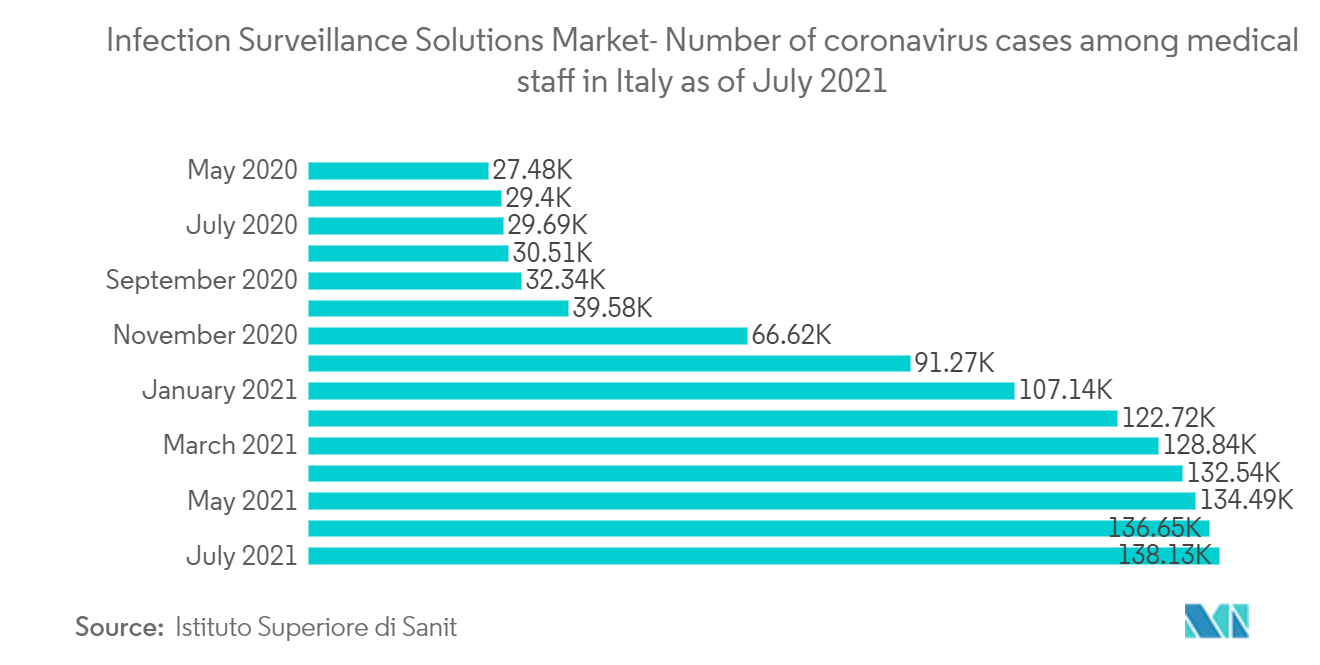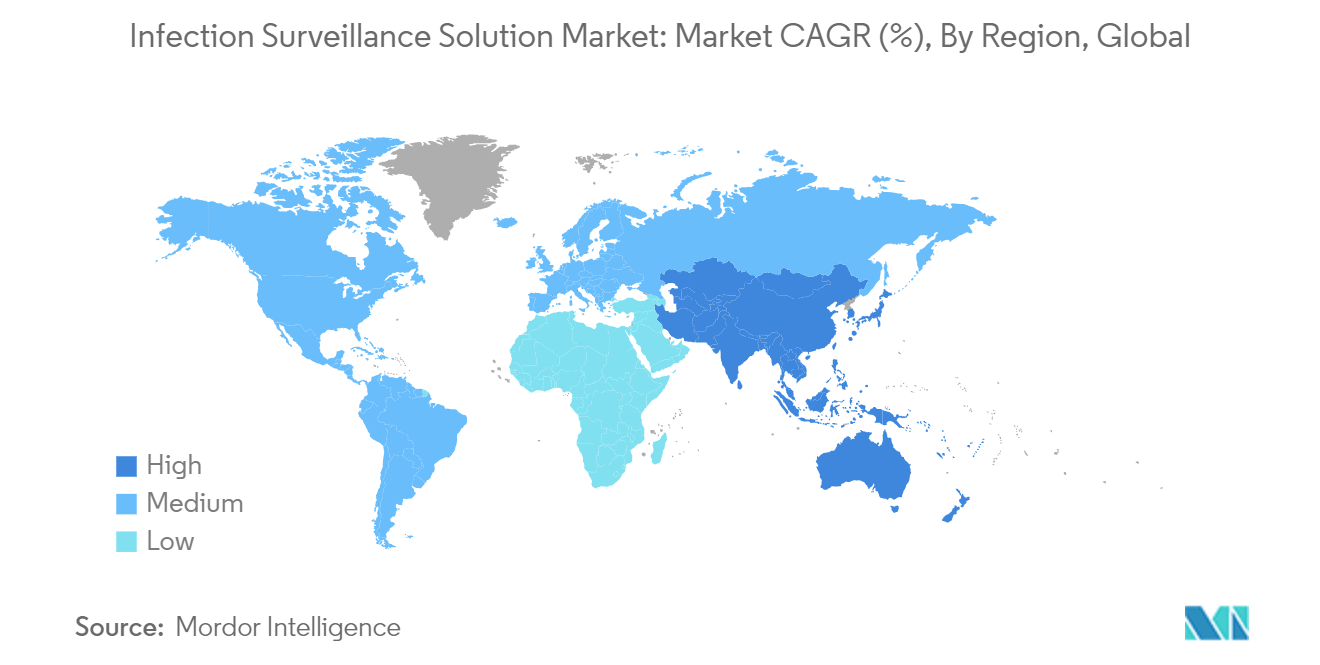Market Trends of Infection Surveillance Solutions Industry
Infection Surveillance by Services is expected to Drive the Market Growth
- Maintenance and support services are very important as these are involved in the prevention of infection and mitigation of persistent infections after the treatment. These are usually required post-surgery and other treatments where the human body is vulnerable. Termed a surgical site infection surveillance service (SSISS), this service allows hospitals to record incidents of infection after surgery, track patient results, and review or change practice to avoid further infections.
- Nations such as Brazil and Argentina chose to use World Bank loans to develop surveillance capacity, and the US Agency for International Development (USAID) redesigned its surveillance strategy to focus on the use of data to improve public health interventions.
- Moreover, more than providing surgical teams with the current surveillance data is required. Surgical teams need to be provided with historical data in order to establish how they have been performing in the past and data from other teams to enable comparison of performance (for example, benchmarking against other surgical teams doing similar procedures). Surveillance training should be conducted by individuals who have expertise in HAI surveillance, epidemiology, and infection prevention and control. Therefore, consultation and training play a vital role.
- Companies are also in the foray as most recently, in February 2023, the National Health Service (NHS) signed a USD 23.60 million deal to enable health-service organizations to deploy the technology by awarding a contract to US-based healthcare giant Baxter for buying a comprehensive infection-control platform for replacing various specialist software programs used by NHS trusts to collect and process data, alongside spreadsheets and paper documents.
- As stay-at-home orders expired and businesses began to reopen, companies like ICCS saw a significant uptick in requests from companies seeking epidemiologists trained in infection prevention to guide how to safely and properly resume operations and stay open. Therefore, the above factors are providing the impetus to the vendors in the market to extend their reach in the new market.

North America Holding Substantial Share of the Market
- North America is one of the largest markets for medical technology research industries globally. The huge market in the region is mainly due to growing R&D activities in the medical sciences. Particularly in the United States of America, Health and Human Services (HHS), which is governed by the cabinet-level department of the US federal government, is very liberal in funding and maintaining technological research in medical sciences.
- The vital government initiatives and increasing incidence of HAIs in the United States are likely to drive the market for infection surveillance. For instance, the National Action Plan (2020-2025) was introduced to combat antibiotic-resistant bacteria, such as Carbapenem-resistant Enterobacteriaceae, methicillin-resistant Staphylococcus aureus, etc.
- Studies also stated that in the United States, 1 out of every 25 hospitalized patients suffers from HAI. As many of these infections occur in the intensive care unit (ICU), hospitals are facing struggles in reducing the infection rate. Due to these issues, the US Department of Health and Human Services made it a priority. It made it a national reduction of HAIs with the objective of building a safer, more inexpensive healthcare system for all Americans.
- In American hospitals, as per the Centers for Disease Control estimations, HAIs account for around 1.7 million infections and 99,000 associated deaths each year. These statistics are driving healthcare centers to adopt infection surveillance solutions in order to provide better care to patients. Many hospitals, such as Allegheny General Hospital, Pittsburgh, Thomas Jefferson University Hospital, Philadelphia, etc., are adopting infection surveillance solutions to minimize HAI incidents.
- Canada is also progressing toward mitigating HAIs, which creates demand for Infection Surveillance solutions in the country. For instance, the Coalition of Healthcare-Acquired Infection Reduction (CHAIR) Canada, a not-for-profit group of industry and healthcare professionals working together to reduce healthcare-acquired infections (HAIs), has set a target to achieve an 80% reduction in healthcare-acquired infections (HAIs) by 2024.
- These dynamics are influencing the growth of technological advances in the hospital, which, in turn, boost the infection surveillance solutions market.


